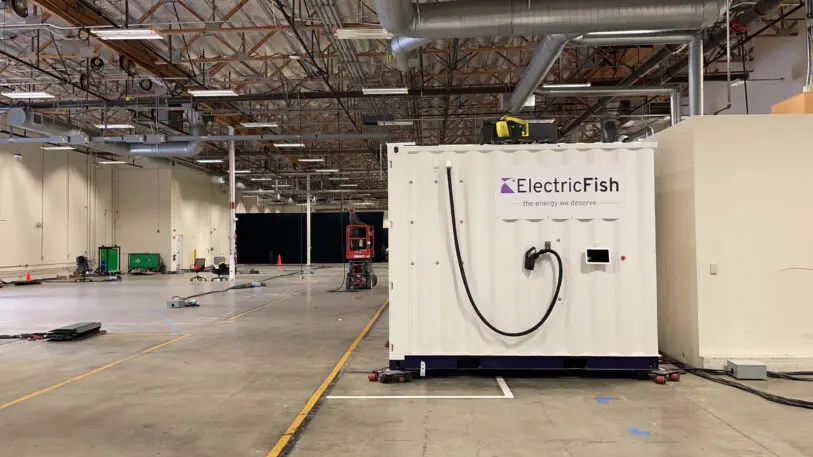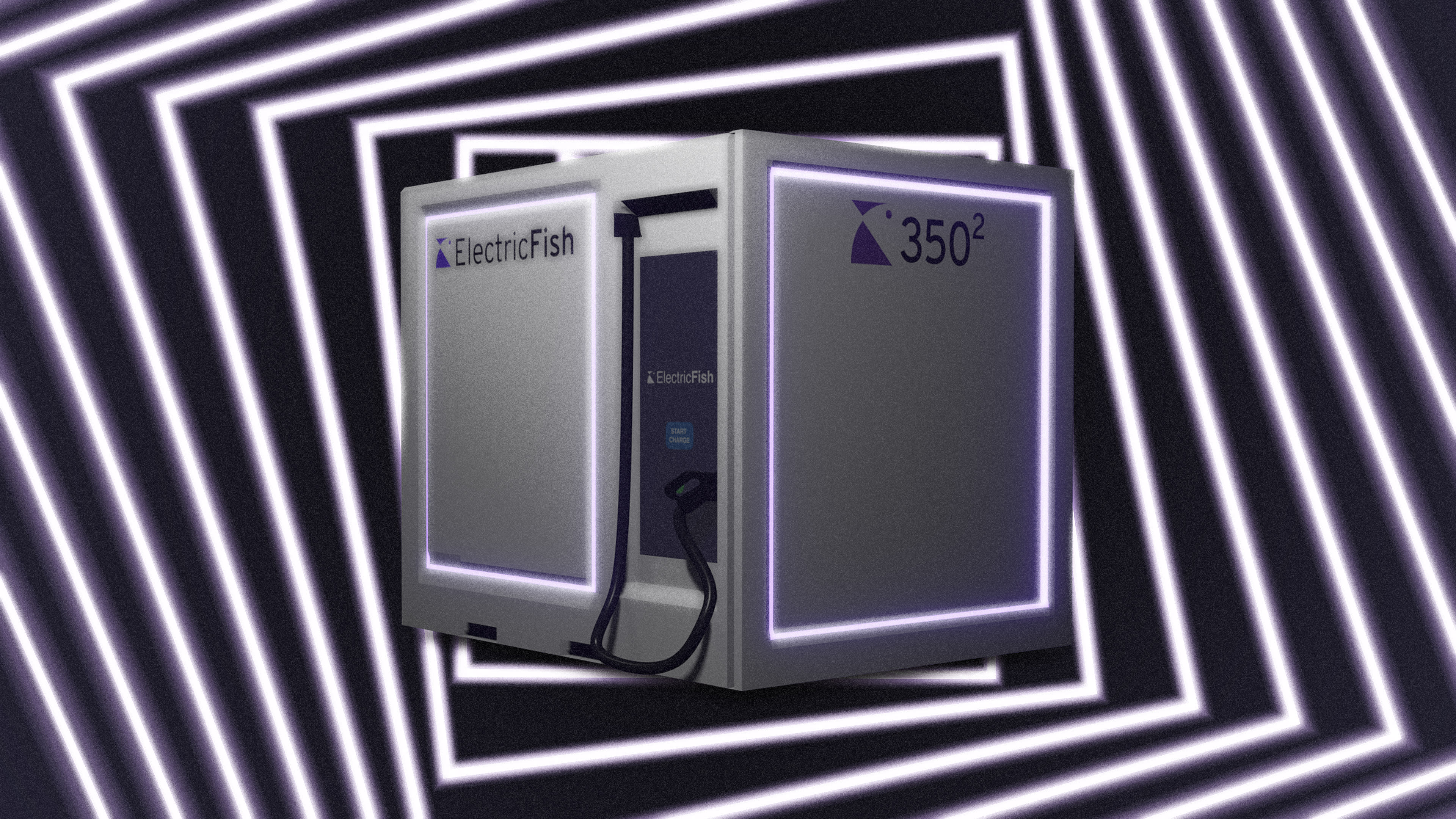By 2030, there may be 26 million electric vehicles on roads in the U.S., and that means there will be a need for more than 10 times as many public and workplace chargers as there are today—an increase from around 216,000 chargers in 2020 to 2.4 million by the end of the decade. Those chargers are needed both for drivers who live in apartments or can’t otherwise plug in their cars at home, and drivers taking longer trips.
But rolling out EV chargers—especially fast chargers that can quickly power up cars but demand as much electricity as 300 homes, each—isn’t easy to do. “We want to unlock mass EV adoption, but the grid is simply not in a position to accommodate that,” says Vince Wong, chief operating officer for ElectricFish, a startup pioneering a new type of charger. Instead of pulling power from the grid whenever a car plugs in, the new device uses a large battery. Throughout the day, the battery charges when excess renewable energy is available. “We can store that energy and then detach the EV charging load from the grid itself,” says Anurag Kamal, the company’s CEO.


It’s a way to help gas station owners adapt to the quickly changing world of transportation. “When we think about the equity aspect of things, first is the gas station owners, which are 70% individually owned in the U.S.,” says ElectricFish cofounder Folasade Ayoola. “So these are really small businesses that are being disrupted. And there’s a ton of real estate now, and assets that are at risk.” The chargers can also be used in other settings, from convenience stores to garages with fleets of electric school buses.
At gas stations, the chargers can sit in parking spaces on the side. Each charger can be used for up to 10 minutes; the charger can add up to 100 miles of range to some top-end cars, like the Lucid Air, in 5 minutes. “We cap it at 10 minutes so that it’s very similar to behavior at a convenience store—people only spend 7 to 10 minutes there,” says Kamal. “And if you come, and the charger is being utilized, you know that at the end of 10 minutes, it will be available for you. So that’s very central in trying to make people believe that EV charging is just like gasoline.”
Recognize your brand’s excellence by applying to this year’s Brands That Matter Awards before the early-rate deadline, May 3.
